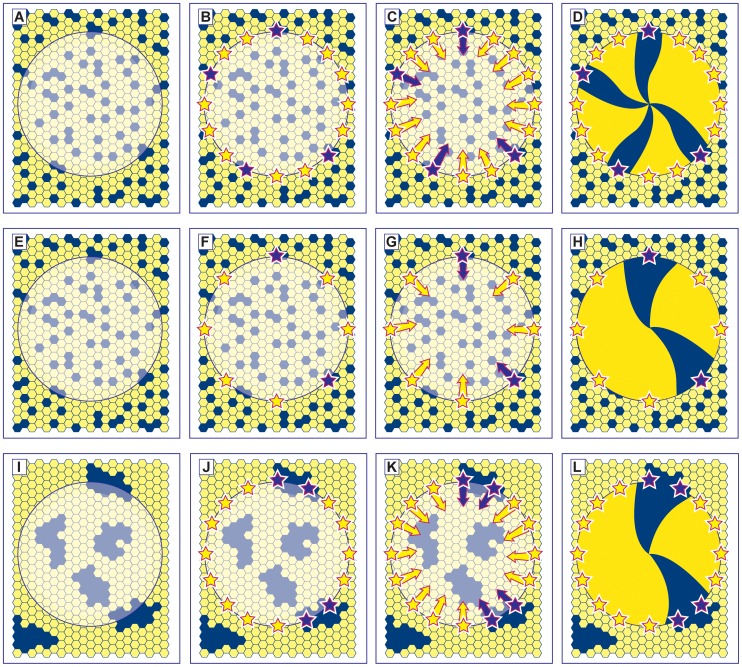Hematopoietic stem cells (HSCs) are a uncommon stem cell inhabitants discovered primarily within the bone marrow and accountable for the manufacturing of the physique’s full complement of blood and immune cells.

Used clinically to deal with a vary of hematopoietic issues, there’s a vital want to establish approaches to selectively broaden their numbers ex vivo. Here we describe a methacrylamide-functionalized gelatin (GelMA) hydrogel for in vitro tradition of main murine HSCs. Stem cell factor (SCF) is a vital biomolecular element of native HSC niches in vivo and is utilized in massive dosages in cell tradition media for HSC growth in vitro.
We report a photochemistry primarily based strategy to covalently immobilize SCF within GelMA hydrogels through acrylate-functionalized polyethylene glycol (PEG) tethers. PEG-functionalized SCF retains the native bioactivity of SCF however may be stably integrated and retained within the GelMA hydrogel over 7 days.
Freshly-isolated murine HSCs cultured in GelMA hydrogels containing covalently-immobilized SCF confirmed decreased proliferation and improved selectivity for sustaining primitive HSCs. Comparatively, soluble SCF within the GelMA hydrogel community induced elevated proliferation of differentiating hematopoietic cells.
We used a microfluidic templating strategy to create GelMA hydrogels containing gradients of immobilized SCF that domestically direct HSC response. Together, we report a biomaterial platform to study the impact of the native presentation of soluble vs.
matrix-immobilized biomolecular indicators on HSC growth and lineage specification. This strategy could also be a vital element of a biomaterial-based synthetic bone marrow to present the proper sequence of area of interest indicators to develop HSCs within the laboratory.
Little is thought about whether or not autophagic mechanisms are lively in hematopoietic stem cells (HSCs) or how they’re regulated. FIP200 (200-kDa FAK-family interacting protein) performs vital roles in mammalian autophagy and different mobile capabilities, however its position in hematopoietic cells has not been examined.
Here we present that conditional deletion of FIP200 in hematopoietic cells leads to perinatal lethality and extreme anemia. FIP200 was cell-autonomously required for the upkeep and performance of fetal HSCs.
Dysregulated megakaryocyte distribution related to nestin+ mesenchymal stem cells in immune thrombocytopenia
FIP200-deficient HSC have been unable to reconstitute lethally irradiated recipients. FIP200 ablation didn’t end in elevated HSC apoptosis, nevertheless it did improve the speed of HSC proliferation. Consistent with an important position for FIP200 in autophagy, FIP200-null fetal HSCs exhibited each elevated mitochondrial mass and reactive oxygen species.
These information establish FIP200 as a key intrinsic regulator of fetal HSCs and implicate a potential position for autophagy within the upkeep of fetal hematopoiesis and HSCs.
Impaired megakaryocyte (MK) maturation and decreased platelet manufacturing are vital causes of immune thrombocytopenia (ITP). However, MK distribution and bone marrow (BM) area of interest alteration in ITP are unclear. To examine the maturation and distribution of MKs within the BM area of interest and study the elements of BM area of interest regulation of MK migration, BM and peripheral blood have been obtained from 30 ITP sufferers and 28 wholesome donors.
Nestin+ mesenchymal stem cells (MSCs) and CD41+ MKs have been sorted by fluorescence-activated cell sorting. The elements of the BM area of interest and associated signaling have been analyzed through immunofluorescence, stream cytometry, enzyme-linked immunosorbent assay, reverse transcription polymerase chain response, and western blot evaluation.
The quantity of MKs within the BM vascular area of interest was decreased in ITP. Moreover, the concentrations of CXCL12 and CXCR4+ MKs within the BM have been decreased in ITP. Further investigation demonstrated that nestin+ MSCs and CXCL12 messenger RNA (mRNA) in nestin+ MSCs have been each decreased whereas the apoptosis of nestin+ MSCs was considerably elevated in ITP.
Sympathetic nerves, Schwann cells, the proportion of β3-adrenoreceptor (β3-AR)+ nestin+ MSCs, and β3-AR mRNA in nestin+ MSCs have been all markedly decreased in ITP. Moreover, matrix metalloproteinase 9, vascular endothelial progress factor (VEGF), and VEGF receptor 1 have been considerably decreased in ITP.
Our information present that impaired MK distribution mediated by an irregular CXCL12/CXCR4 axis is partially concerned in decreased platelet manufacturing in ITP. Moreover, sympathetic neuropathy and nestin+ MSC apoptosis could affect the alterations of BM CXCL12 in ITP.
